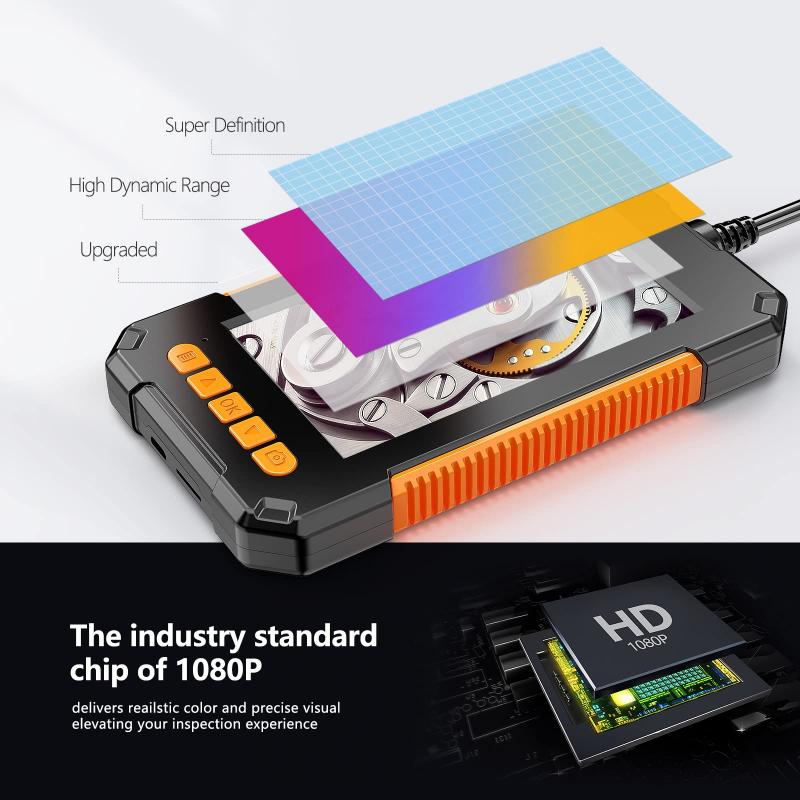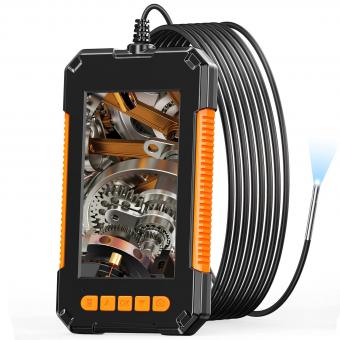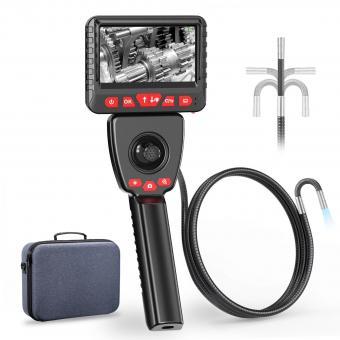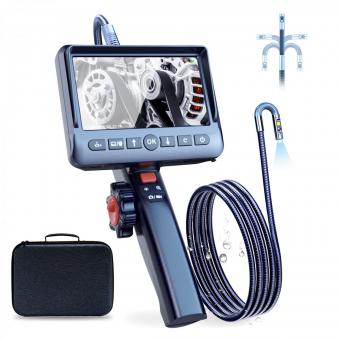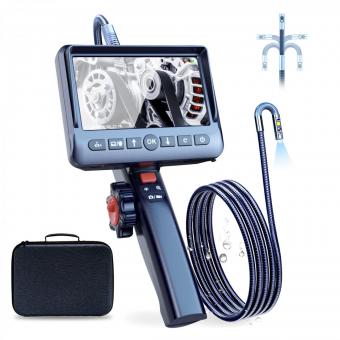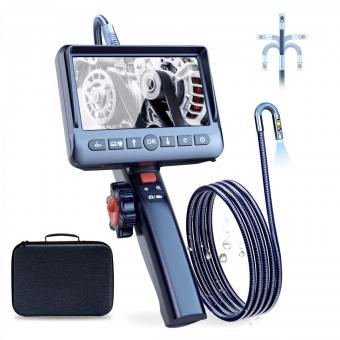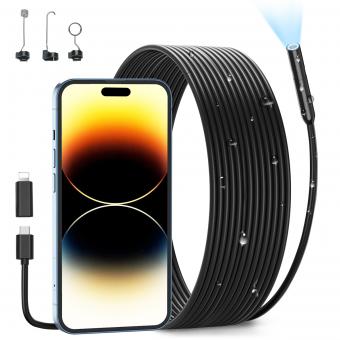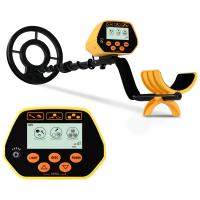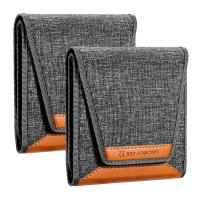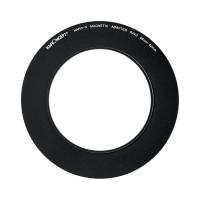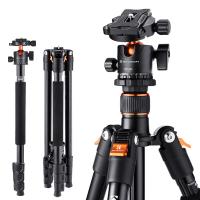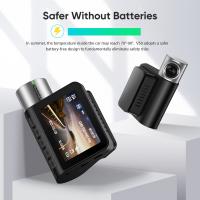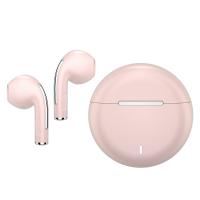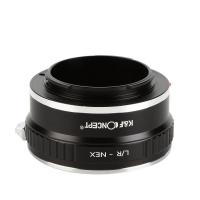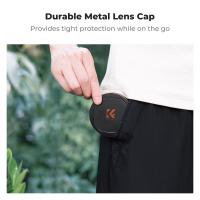What Is Borescope Endoscope Camera ?
A borescope endoscope camera is a type of camera that is used for visual inspection in hard-to-reach or inaccessible areas. It is designed to be inserted into narrow spaces, such as pipes, engines, or machinery, to capture images or videos of the internal components. The camera is typically attached to a flexible tube or probe, allowing it to navigate through tight spaces. Borescope endoscope cameras are commonly used in various industries, including automotive, aviation, plumbing, and manufacturing, for tasks such as diagnosing engine problems, inspecting pipes for blockages or leaks, or examining the internal parts of machinery. The captured images or videos can be viewed in real-time on a display screen or recorded for later analysis.
1、 Definition and Function of Borescope Endoscope Camera
A borescope endoscope camera is a specialized device used for visual inspection in hard-to-reach areas. It consists of a flexible tube with a camera at one end and a display screen or a smartphone attachment at the other end. The camera captures high-resolution images or videos of the internal components or spaces, allowing users to identify potential issues or defects without the need for disassembly.
The primary function of a borescope endoscope camera is to provide a non-destructive way of inspecting areas that are difficult or impossible to access with the naked eye. It is commonly used in various industries such as automotive, aviation, plumbing, and manufacturing. For example, mechanics can use a borescope endoscope camera to inspect the inside of an engine or other components without having to dismantle them, saving time and effort.
The latest advancements in borescope endoscope camera technology have led to the development of wireless and portable devices. These cameras can be connected to smartphones or tablets, allowing for real-time viewing and recording of the inspection. Some models also offer additional features such as adjustable LED lights, image stabilization, and measurement capabilities.
Borescope endoscope cameras have become an essential tool in many professions, enabling professionals to detect and diagnose problems quickly and accurately. They have revolutionized the inspection process by providing a cost-effective and efficient solution. With ongoing advancements in technology, borescope endoscope cameras are likely to become even more versatile and user-friendly in the future.
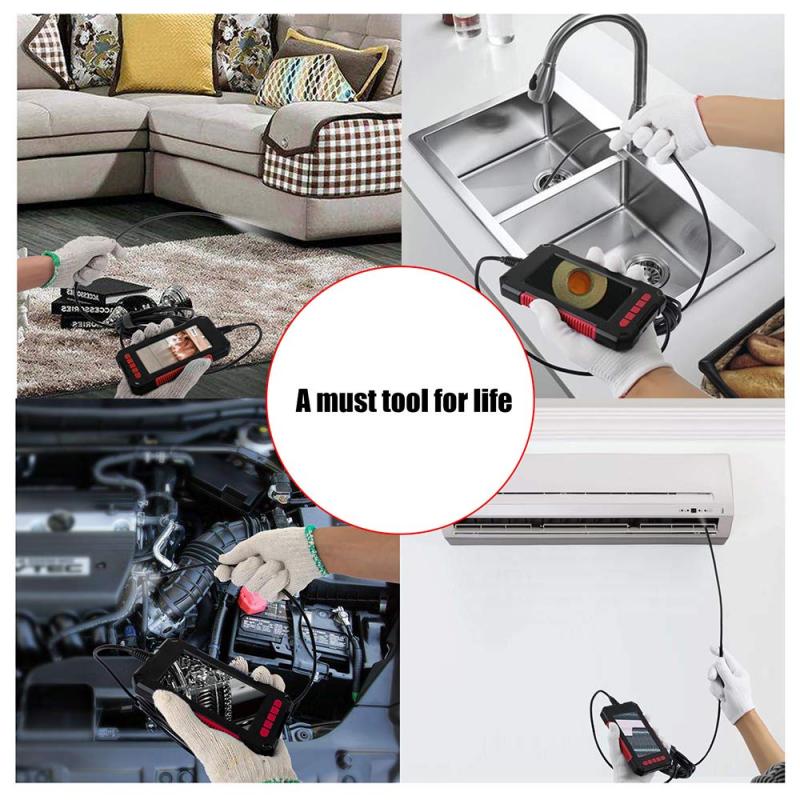
2、 Types and Components of Borescope Endoscope Cameras
A borescope endoscope camera is a versatile tool used for visual inspection in hard-to-reach areas. It consists of a flexible tube with a camera at one end and a display unit at the other. The camera captures high-resolution images or videos of the internal components of machinery, pipes, or other inaccessible areas, allowing users to identify potential issues or defects without the need for disassembly.
There are several types of borescope endoscope cameras available, each designed for specific applications. Rigid borescopes are used for straight-line inspections, while flexible borescopes are ideal for navigating through curved or narrow spaces. Videoscopes are equipped with a video camera and a flexible cable, enabling real-time viewing on a separate display unit. Fiberscopes use fiber optic technology to transmit images from the camera to the display unit.
The components of a borescope endoscope camera typically include the camera head, which may have adjustable lighting to illuminate the inspection area, a flexible or rigid insertion tube, and a display unit. Some advanced models may also have additional features such as image or video recording capabilities, wireless connectivity, or built-in measurement tools.
The latest advancements in borescope endoscope cameras include the integration of high-definition cameras, improved image sensors, and enhanced lighting systems. These advancements have resulted in clearer and more detailed images, making it easier for users to detect and analyze potential issues. Additionally, the development of wireless connectivity has allowed for remote viewing and sharing of inspection results, increasing efficiency and collaboration in various industries.
In conclusion, a borescope endoscope camera is a valuable tool for visual inspection in inaccessible areas. With various types and components available, it offers flexibility and convenience in identifying potential issues or defects. The latest advancements in technology have further improved the capabilities of these cameras, providing users with clearer images and enhanced functionality.

3、 Applications and Industries Utilizing Borescope Endoscope Cameras
A borescope endoscope camera is a device used to visually inspect hard-to-reach areas that are inaccessible to the human eye. It consists of a flexible tube with a camera at one end and a display screen or smartphone attachment at the other end. The camera captures high-resolution images or videos of the area being inspected, allowing users to identify any issues or anomalies.
Borescope endoscope cameras have a wide range of applications across various industries. In the automotive industry, they are used for inspecting engines, cylinders, and other components for damage or wear. In the aviation industry, they are used for inspecting aircraft engines, wings, and other critical parts. They are also commonly used in the plumbing industry to inspect pipes and drains for blockages or leaks.
In the medical field, borescope endoscope cameras are used for minimally invasive procedures, such as arthroscopy and laparoscopy. They allow doctors to visualize and diagnose internal conditions without the need for large incisions, reducing patient discomfort and recovery time.
The latest point of view regarding borescope endoscope cameras is the integration of advanced technologies such as wireless connectivity and high-definition imaging. Wireless borescope endoscope cameras allow for greater flexibility and ease of use, as they can be connected to smartphones or tablets for real-time viewing and recording. High-definition imaging capabilities provide clearer and more detailed visuals, enhancing the accuracy of inspections and diagnoses.
Overall, borescope endoscope cameras have become indispensable tools in various industries, enabling professionals to conduct thorough inspections and maintenance in hard-to-reach areas. The continuous advancements in technology are further enhancing their capabilities and expanding their applications.
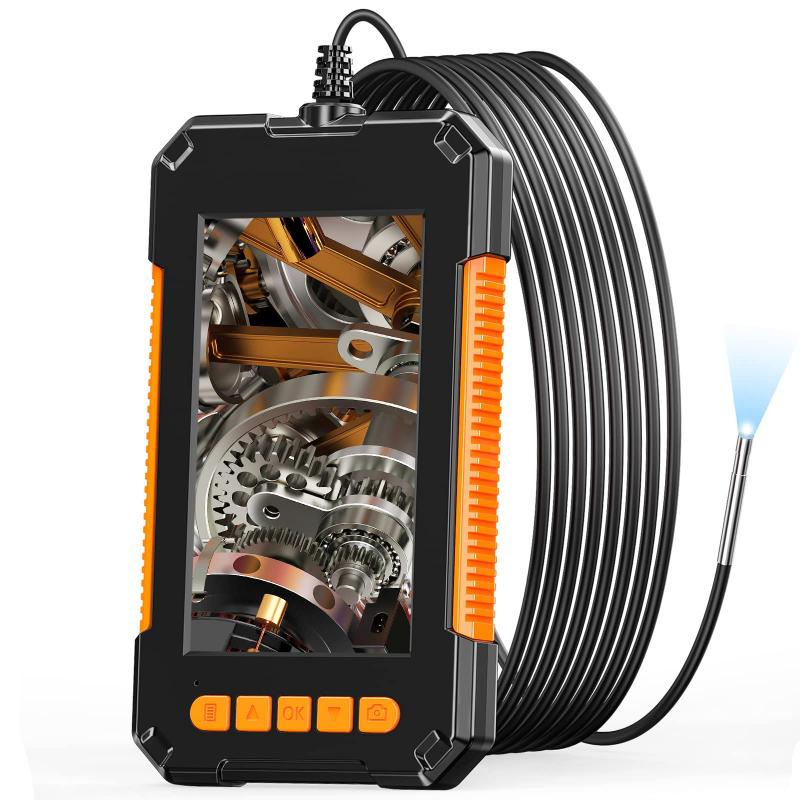
4、 Advantages and Limitations of Borescope Endoscope Cameras
A borescope endoscope camera is a device used to visually inspect hard-to-reach areas. It consists of a flexible tube with a camera at one end and a display screen or smartphone attachment at the other end. The camera captures high-resolution images or videos of the area being inspected, allowing the user to see and diagnose any issues or problems.
The advantages of borescope endoscope cameras are numerous. Firstly, they provide a non-destructive way to inspect areas that are difficult or impossible to access with the naked eye. This makes them particularly useful in industries such as automotive, aviation, plumbing, and construction, where hidden or confined spaces need to be examined. Secondly, borescope endoscope cameras are portable and lightweight, making them easy to carry and use in various locations. They are also relatively affordable compared to other inspection tools, making them accessible to a wide range of users.
However, borescope endoscope cameras do have some limitations. One limitation is their limited field of view, which can make it challenging to capture a comprehensive view of larger areas. Additionally, the image quality may vary depending on the camera's resolution and lighting conditions. Some models may also have limited battery life, which can be a constraint during longer inspections.
In recent years, there have been advancements in borescope endoscope camera technology. Some models now offer wireless connectivity, allowing users to view and capture images on their smartphones or tablets. This feature enhances convenience and flexibility during inspections. Additionally, there have been improvements in camera resolution and lighting, resulting in clearer and more detailed images.
In conclusion, borescope endoscope cameras are valuable tools for visual inspection in hard-to-reach areas. While they have some limitations, advancements in technology have made them more versatile and user-friendly. As industries continue to evolve, borescope endoscope cameras are likely to play an increasingly important role in inspection and maintenance processes.
